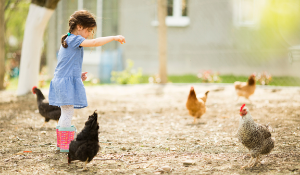- Posted by Anitox
How to Avoid Poor Flock Uniformity with Pellet Quality
A poorly managed flock can lead to several on farm and processing issues. Fluctuating bird size and inadequate yield are common consequences of substandard pellet quality. Pellets that crumble into fines may lead to nutritional imbalances within the flock.
Using a powerful aid, such as Maxi-Mil, at your farm optimizes the conditioning of meal by improving thermal energy penetration through feed and promotion of feed particle binding during pelleting to improve pellet quality and reduce fines. Available with and without added mold control, Maxi-Mil products can reduce process loss, optimize feed moisture levels, improve mill throughput, and reduce power consumption during pelleting. By protecting feed nutritional values and pellet quality, Maxi-Mil helps optimize feed intake, driving efficient live production of poultry.
Why Feed Pellets Instead of Mash?
Pelleted feed is chosen over mash feed to increase the bulk density and lower feed transportation costs, increase feed conversion rates and body weight. Additionally, pelleted feeds reduce waste and are easier to store.
In a study done by Kenny and Rollins in 2007, it was discovered that birds fed entire pellets demonstrated better feed efficiency and intake than those fed fines. Research found that birds fed lower levels of fines spend less time eating and more time resting, leading to improved body weight and feed conversion.
How Does Pellet Quality Effect Bird Performance?
Good pellet quality is a bit like Goldilocks and the three bears—it should not be too soft nor too hard, but just right. Pellets too soft will result in crumbling and feed fines. Alternatively, pellets too hard will break and create fines.
So how does that effect your flock? Fines lead to the segregation of nutrients. If some birds are consuming fines and others fully formed pellets, the birds consuming fines will not get the formulated nutrient balance. This will lead to uneven growth rates within the flock, and poor flock uniformity. This, in turn, can mean that some birds struggle to reach the target weight required by the buyer, causing significant problems when trying to sell the livestock. If pellet quality is high there will be fewer fines, reducing nutrient segregation, leading uniform growth throughout the flock.
How Can I Improve Pellet Quality to Reduce Fines?
Take control of your pellet quality today in a few simple steps.
- Feed Formulation
-
- Ensure the optimal feed formulation is used and that ingredients can easily be gelatinized to aid the binding of the pellet.
- Grinding
-
- Verify particles are ground uniformly to the correct size, allowing for more even steam absorption, increased feed digestibility, and less pellet breakage.
- Mixing
-
- Check your mixer’s coefficient of variation (CV) to ensure even distribution of nutrients and particle size throughout the batch.
- Conditioning
-
- Adjust paddles to allow for longer conditioner retention time.
- Steam
-
- Ensure a good quality steam.
- Die
-
- Keep a well-maintained die and checking the appropriateness of die specifications and compression ratio.
- Cooling
-
- Inspect cooler for air leaks, bed depth, and feed level to ensure pellets are being sufficiently and evenly cooled.
- Sieving
-
- Sieve batches carefully after cooling to remove fines.
- Maxi-Mil
-
- Maxi-Mil is a powerful aid to milling efficiency, proven to lower manufacturing costs and produce better quality pellets when used as part of an Anitox milling efficiency program. It is relied on by three of the four largest feed producers in the world. It delivers quantifiable returns on investment by reducing process loss and improving pellet quality. Contact your local Feed Milling Technologist to review your milling processes and assess the need for appropriate intervention.


